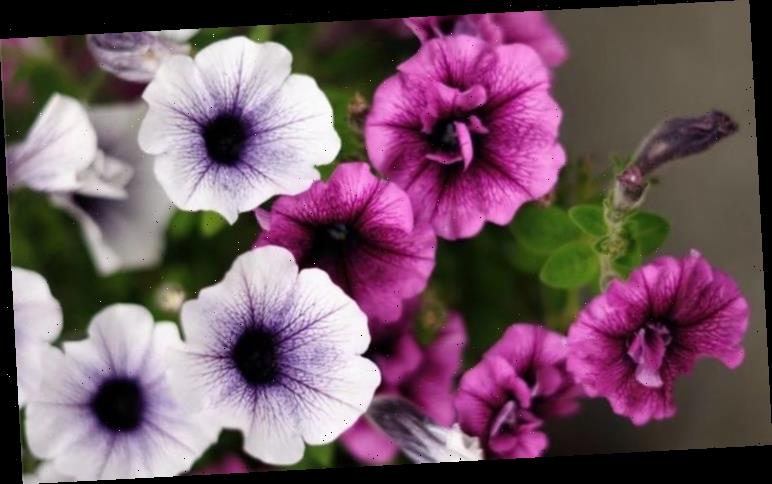Gardening: The Rich Brothers give tips on planting with pots
When you subscribe we will use the information you provide to send you these newsletters.Sometimes they’ll include recommendations for other related newsletters or services we offer.Our Privacy Notice explains more about how we use your data, and your rights.You can unsubscribe at any time.
Petunias carry a great variety in a number of aspects, including a wide range of colours; single and double blooms; smooth or ruffled petals; solid, single, striped, veined or picotee-edged colours; and even their fragrance. Recent breeding has removed some of the scourge of old petunia varieties which tended to turn to mush during a wet summer. Petunias are perennial, although most bedding types are grown as annuals from seed every year. The trailing varieties of petunias, including Surfinias, are perennial and are grown from cuttings or new plants.
When to plant petunias
Petunia seeds should be planted best in May or June after the bulk of the winter frost has passed.
Petunias like a good, sunny position where the soil is well drained but still moist.
Avoid planting them in a location where water tends to collect after rain or watering as petunias don’t really tolerate soggy soil.
Proper watering will keep your flowers healthy and help to promote plenty of flowers.
Deep watering helps promote healthy roots as well, whereas infrequently watering is harmful as the plant grows weak, shallow roots.
This stops the petunia’s ability to seek nutrients and moisture in the soil, often leading to the flower’s death.
Newly planted petunias need evenly moist soil for the first few weeks after sowing the seeds.
Once established, reduce watering to about once per week, giving them about five centimetres of water to moisten the top few inches of soil.
Petunias can tolerate a mild dry spell but they should never be allowed to completely dry out.
If they’re planted in containers or hanging baskets, they tend to dry out much more quickly.
It’s caused by evaporation, as well as a limited amount of soil for them to feed from.
To check the moisture levels of the water, stick one of your fingers into the soil to properly assess the situation.
DON’T MISS
When to plant runner beans [INSIGHT]
How to keep tulips upright:Ttips to stop your fresh flowers drooping [EXPLAINED]
Alan Titchmarsh shares warning on how to grow plants from seeds [WARNING]
As soon as the top inch – about two centimetres – of the soil feels dry, give the plants a good watering.
Ensure the soil is evenly watered until the excess drains out completely from the bottom of the container.
Once planted, start using a liquid feed every two weeks to help the petunias along.
Spreading petunias could require a weekly feed, while plants in containers and hanging baskets will respond well to a time-released fertiliser.
A high potash liquid plant food will encourage more and better blooms over a long flowering period, lasting until the first autumn frost hits.
Removing faded flowers and any developing seed pods will also help prolong the display of petunias.
Stray and straggly plants can be cut back quite hard and then fed with a liquid plant fertiliser to produce fresh, new growth and more flowers.
In the Autumn, once damaged by forests, bedding petunias are best dug up and composted.
Source: Read Full Article




